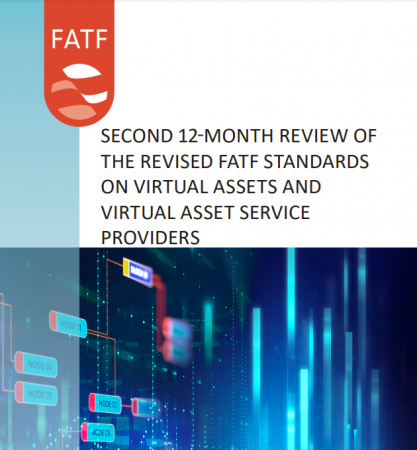The year 2022 presented a Rubicon moment for the crypto industry as it underwent a series of high-profile disasters. The demise of a myriad of previously respected crypto entities – from the Terra ecosystem, to Three Arrows Capital, Voyager Digital, Celsius, BlockFi, and FTX – now brings with it in 2023 a long-awaited arrival of intense regulatory scrutiny from around the world.
With the US House Financial Services Committee now holding hearings on FTX, the results of such investigations into what went wrong will likely inform the next round of US regulations. The only question is whether this will be enough to prevent the mayhem from playing out again.
At the same time, Europe seems set to become the first mover in the domain of comprehensive regulation, charging ahead with plans to implement its Markets in Crypto-Assets (MiCA) framework.
EU to lead in crypto regulation
The European Union is about to deliver sweeping regulations for the cryptocurrency market. MiCA will be the first exhaustive regulatory package of its kind, and it’s likely to set the bar for what follows in other jurisdictions.
The legislation spans many areas, including anti-money laundering (AML), consumer protection, corporate reporting, transfer of funds, and the environment. It would require stablecoin issuers to hold adequate reserves to avert collapse and require crypto miners to disclose their energy consumption. Additionally, any exchanges operating in the region must be supervised by a financial regulator from an EU member state.
Although the framework is set for a final vote in February, it will not take effect until 18 months later. This lag may create a scenario where crypto entities can offshore in such a way as to prepare for maximum tax avoidance and regulatory evasion. For those companies that dodge MiCA in this way, it may still be possible to transact in the EU via loopholes such as “reverse solicitation.” Furthermore, companies going that route could capture market share by offering black market services to clients that would be unavailable under the regulatory umbrella.
Mixed signals from the US
The United States is sending mixed signals on its approach to regulating crypto, and it remains unclear whether there is both the will and consensus required to take significant steps.
The Biden administration’s report on stablecoins suggested regulation, while a bill sponsored by Rep. Patrick McHenry (R-N.C.) would allow the Federal Reserve to license stablecoin issuers, such as Circle and Paxos, and link them to lenders and insurers. However, the proposal has faced opposition and has even been described as a “pretty ugly baby” by McHenry due to disagreements among its backers.
Meanwhile, the Senate Agriculture Committee’s Digital Commodities Consumer Protection Act (DCCPA) is mulling whether to protect consumers from risky crypto platforms by strictly regulating crypto-asset custody. If the effort succeeds, the Commodity Futures Trading Commission (CFTC) will have oversight and charge violators. However, there are those who believe such an approach would unfairly target decentralized finance (DeFi) protocols by impacting the sector’s “unique features of composability and permissionlessness,” per an op-ed by Jennifer Schulp and Jack Solowey of the Cato Institute.
All eyes are on Gensler’s SEC
Amid all the complicated wrangling in the US, some experts believe that any new oversight and enforcement of crypto is most likely to come from the Securities and Exchange Commission (SEC) and the CFTC as opposed to Congress. SEC Commissioner Hester Peirce is pushing both regulators to work together on new rules, stating that it would be “problematic” to leave it to just one agency.
In recent years, the SEC has become more active in targeting lawsuits against crypto companies. Except for its lawsuit against Ripple regarding the company’s XRP token, most of these actions have been fairly uncontroversial. It’s expected that such litigation will accelerate this year.
However, the SEC has also faced much criticism over crypto, especially for its handling of the FTX collapse. The apparent links between SEC Chair Gary Gensler and various figures in the FTX saga have raised eyebrows. Furthermore, an SEC accounting rule deterring reputable TradFi entities from keeping crypto assets under management has proven more complicated than it may have seemed at first. In the eyes of some, a reversal of that rule might steer the public towards “safer” crypto custody providers, i.e., American banks.
Gensler has also signaled his interest in treating most crypto tokens as securities, which would place them under his remit. If the US were to follow through on such an approach, essentially requiring crypto projects to perform the same audits and disclosures demanded of publicly listed corporations, that would certainly mark the most significant crypto regulatory development in 2023.


